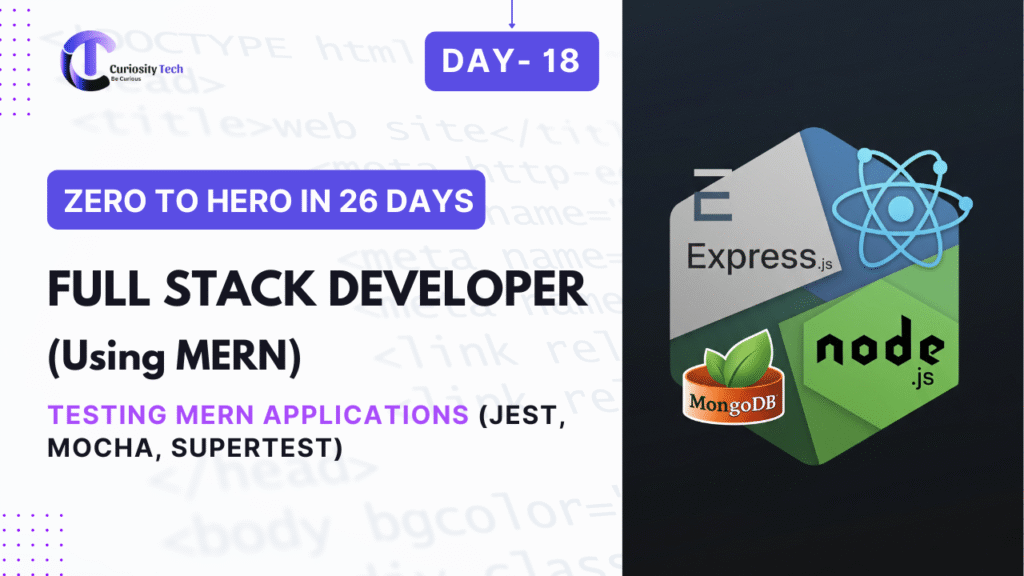Introduction
The MERN Stack ecosystem is rapidly evolving. By 2025, modern full-stack development demands adoption of Next.js for server-side rendering, TypeScript for type safety, advanced state management, and performance-first architectures. Staying updated with trends ensures developers remain competitive and can build scalable, maintainable, and high-performance applications.
CuriosityTech.in emphasizes future-ready MERN development, guiding learners to integrate modern tools, frameworks, and practices into their projects.
Step 1: Next.js Integration
Why Next.js:
Provides server-side rendering (SSR) and static site generation (SSG)
Improves SEO, performance, and initial page load
Supports API routes, enabling backend logic within the same project
Next.js Architecture in MERN:
[Next.js React Frontend] ↔ [Node.js + Express API or API Routes] ↔ [MongoDB Database]
Benefits:
Faster rendering and improved SEO
Built-in routing with file-system structure
Hybrid static & dynamic pages for optimized performance
Step 2: TypeScript Adoption
Why TypeScript in MERN:
Adds static type-checking, preventing runtime errors
Improves developer productivity and code maintainability
Enhances collaboration in large MERN teams
Implementation Tips:
Convert React components with .tsx extension
Add type definitions for API responses, database models, and props
Use TypeScript with Node.js backend to enforce type safety for routes and controllers
Example – TypeScript Type for User:
interface User {
_id: string;
name: string;
email: string;
profilePic?: string;
}
Step 3: Advanced State Management
Redux Toolkit remains popular for complex state
Emerging trend: React Query or Zustand for server state and caching
Benefits:
Minimized boilerplate
Optimized data fetching and synchronization
Improved app performance with selective re-renders
Step 4: GraphQL & Apollo Client
Combining GraphQL with MERN is becoming mainstream:
Reduces over-fetching
Simplifies API evolution
Works well with SSR in Next.js
Using Apollo Client in React ensures efficient caching, query management, and performance optimization.
Step 5: Microservices & Serverless Architecture
Serverless Functions:
AWS Lambda, Vercel Serverless, Netlify Functions
Deploy individual APIs or background tasks without managing servers
Microservices:
Split backend into smaller, independent services
Scalable, maintainable, and easier to update
Diagram – MERN with Modern Trends:
[Next.js + TypeScript Frontend] ↔ [GraphQL / REST APIs] ↔ [Node.js Microservices / Serverless Functions] ↔ [MongoDB / Cloud Databases]
Step 6: Performance & Monitoring Trends
Use Vercel, AWS, or Cloudflare for global deployment
Real-time performance monitoring: Sentry, LogRocket, New Relic
Adopt edge caching and CDNs for fast delivery
Table – Trend Comparison:
Trend/Tool
Purpose
Benefits
Next.js
SSR/SSG for React
SEO, performance, routing simplicity
TypeScript
Type safety for frontend & backend
Fewer bugs, maintainability
GraphQL & Apollo
Efficient data fetching
Flexible queries, caching
React Query/Zustand
State management
Server state optimization
Serverless & Microservices
Backend scalability
Modular, maintainable, cost-efficient
Step 7: Becoming an Expert in MERN 2025 Trends
Master Next.js for SSR, SSG, and routing
Adopt TypeScript across frontend and backend
Use modern state management solutions like React Query or Redux Toolkit
Explore GraphQL and Apollo for flexible API consumption
Understand serverless and microservices architectures for scalable MERN apps
Monitor and optimize performance using modern tools and deployment practices
CuriosityTech.in provides cutting-edge workshops, teaching developers how to integrate these trends into MERN projects for high-performance, maintainable, and future-proof applications.
Infographic Suggestion
Title: “MERN Stack 2025 – Modern Trends & Architecture”
Sections: Next.js, TypeScript, GraphQL, React Query/Zustand, Serverless/Microservices, Monitoring Tools
Conclusion
Keeping up with trends like Next.js, TypeScript, advanced state management, GraphQL, and serverless architecture is critical for MERN developers in 2025. CuriosityTech.in guides learners to adopt these technologies, enabling the development of scalable, high-performance, and maintainable full-stack applications ready for modern production environments.
Day 24 – MERN Stack Trends in 2025: Next.js, TypeScript & More



